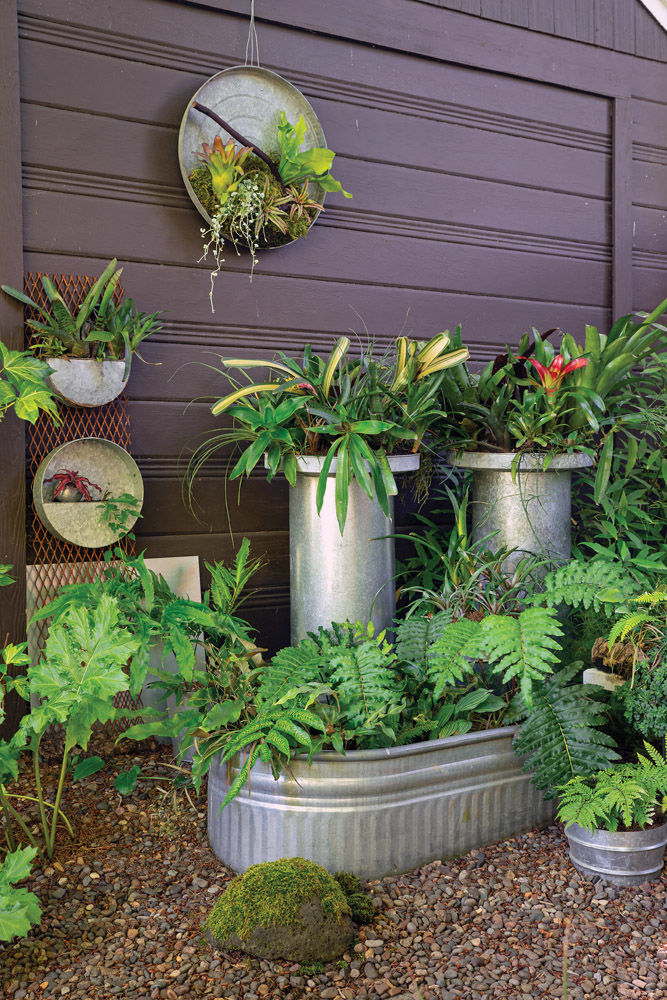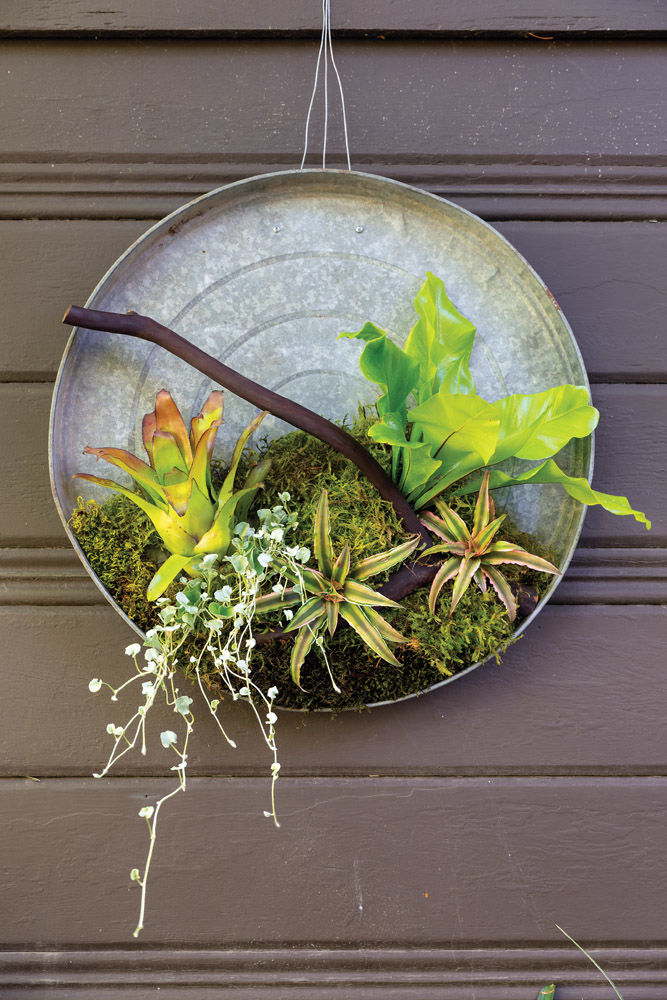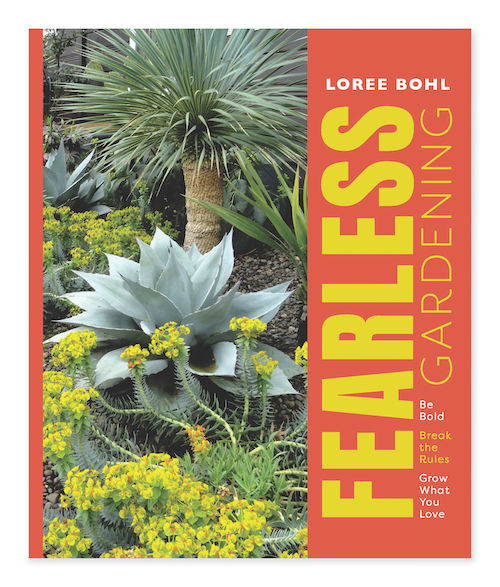DIY Scrap Metal to Planters
Posted by admin on
As an Amazon Associate, we earn from qualifying purchases made through affiliate links.
Loree Bohl is fond of foliage plants, the stranger the better. She gardens in the temperate 8b usda Plant Hardiness Zone, in Portland, Oregon—which lets her take full advantage of unusual and even “dangerous” (spiny, thorny, poisonous) plants that thrive in Southern California, the desert Southwest, or faraway rainforests.
Generous use of planters is one key to her success. In them she can grow delicate, less-hardy species, which she over-winters indoors. She creates planters using such salvaged materials as stock tanks, the galvanized tubs used provide water to livestock. Loree has managed to work 12 tanks into her small, urban garden, to hold ferns or to become a water feature.

Loree Bohl’s Portland garden is filled with planters and stands made from recyled metal ducting and troughs. (Photo: William Wright)
Considerations
Succulents work well in dish planters, as they don’t require much soil and
will survive hot days and dry conditions. Bromeliads and other epiphytic plants also do well with little soil, as long as they are kept moist with water in the center cup formed by their leaves. Annuals are an easy-care accent that can be discarded at the end of the season.
Watering is straightforward: a gentle, daily misting keeps the plants happy. When the weather has been especially hot and dry, plants are given an occasional thorough soaking.
DISH PLANTERS
Inspired by shallow dishes atop cylinder pedestals, hands-on gardener Loree Bohl fabricated her own. She began with a galvanized post from a chain-link fence, cutting it down with a hack saw to the right height, then pounding it into the ground with a mallet. The dish was made from the cap of a chicken feeder, turned upside down. Covered with a square of window screening to prevent washout, the hole in the center provides drainage. Bohl says that any sort of wide, shallow bowl can be used, from a glass fixture shade to a hubcap. The dish is not attached to the post, allowing it to be taken inside for the winter. Instead, a length of clear rubber tubing (for a refrigerator water line) was slit, then pressed around the top edge of the post to give the bowl stability and grip.

A garbage-can lid becomes the perfect shallow, hanging wall planter for Asplenium nidus (bird’s-nest fern) and bromeliads. A manzanita branch and moss hold everything in place. (Photo: William Wright)
HANGERS
Bohl became a regular at salvage yards, bringing home such things as an angular heating vent she filled with exotic bromeliads. An aluminum trashcan lid was recycled as a pleasingly round, shallow planter. Bohl detached a three-prong wire hook from a hanging basket, then wound the wires around the handle of the lid (now the back of the planter). A narrow wood cleat in back holds the wires and keeps the lid from flipping forward on the wall. A Y-shaped branch set it across the inside of the lid (attached with thin wires on each end) holds the bromeliads, ferns, and moss in place.
About Loree Bohl

Loree Bohl (Photo: William Wright)
Loree Bohl is a well-known author, and founder of the popular blog The Danger Garden (thedangergarden.com; and @thedangergarden on Instagram), where she counsels gardeners to live life a little dangerously. Her latest book is Fearless Gardening: Be Bold, Break the Rules, Grow What You Love. She says gardening advice is too often rule-bound, stifling creativity and the possibility of a unique garden. Take risks, Bohl says. Not every experiment works, but plenty do, as proven in her own garden.
The post DIY Scrap Metal to Planters first appeared on Old House Journal Magazine.
